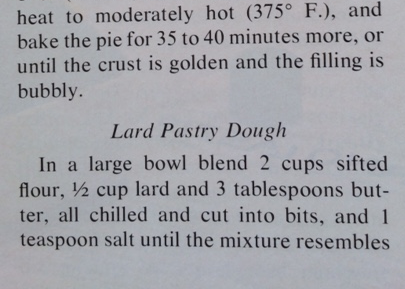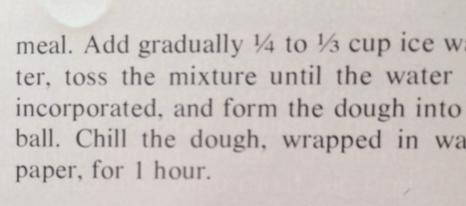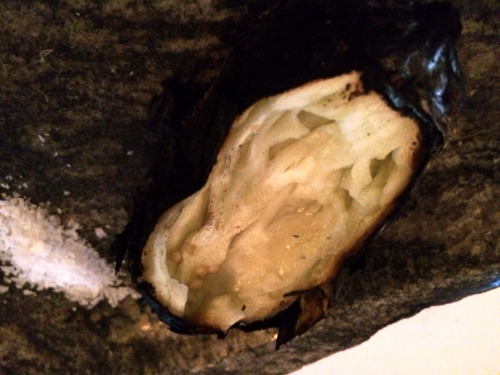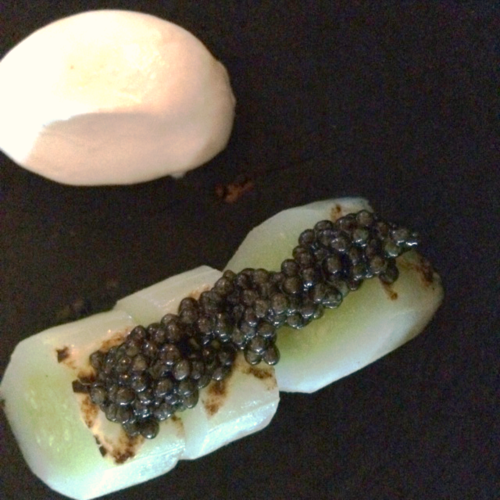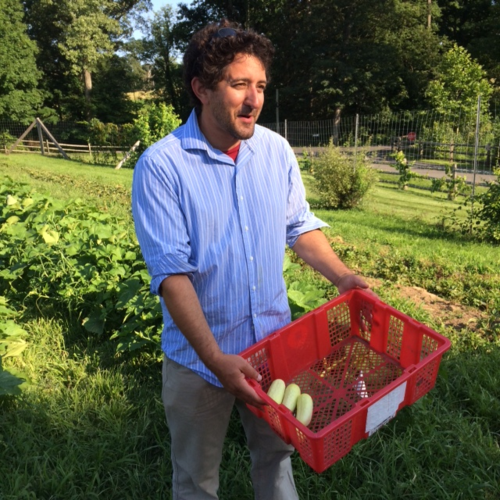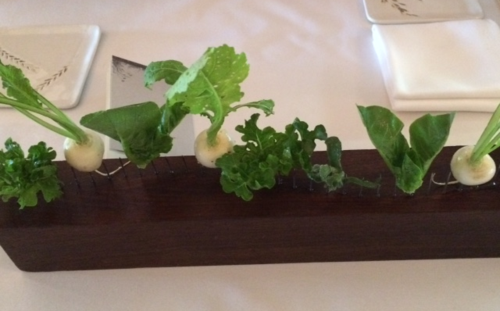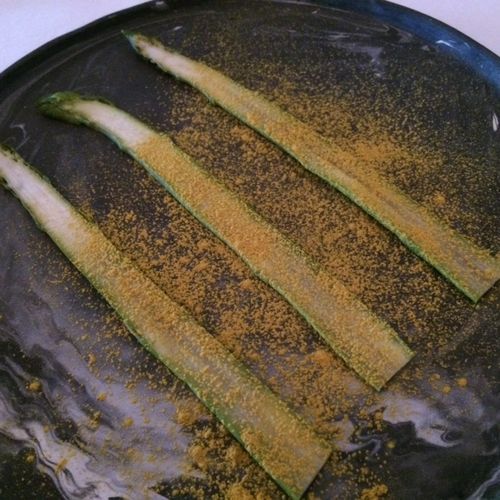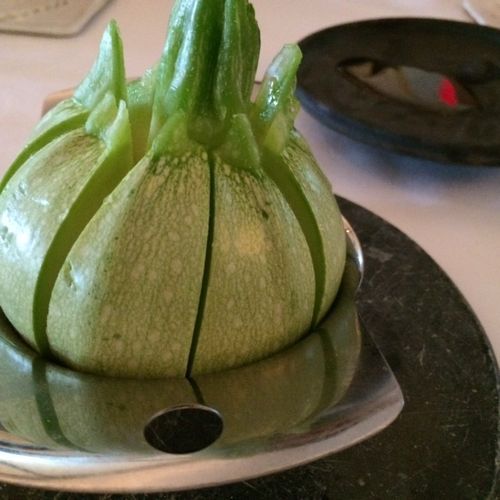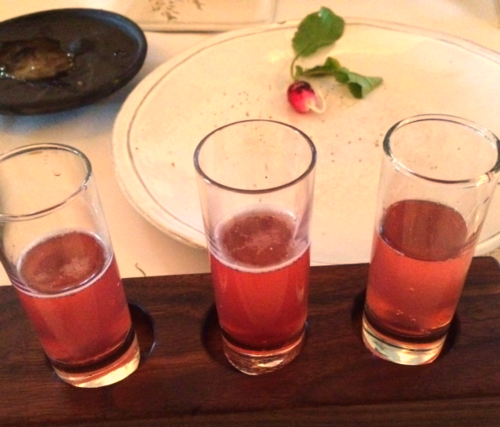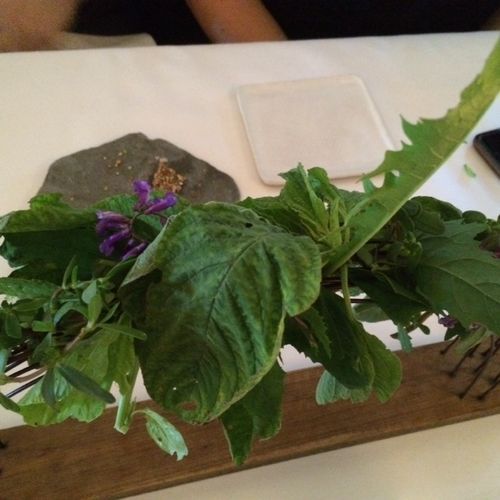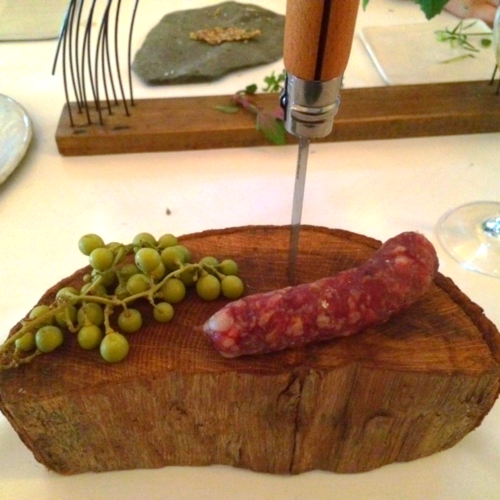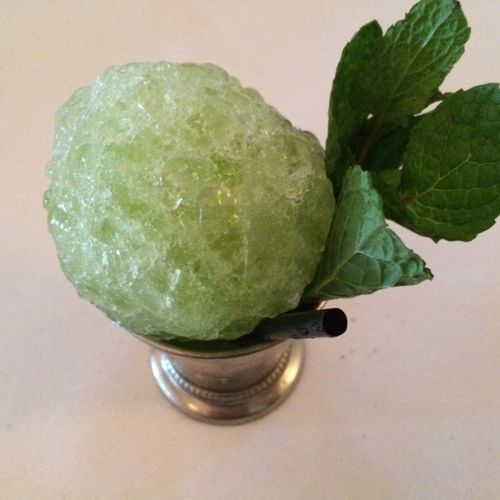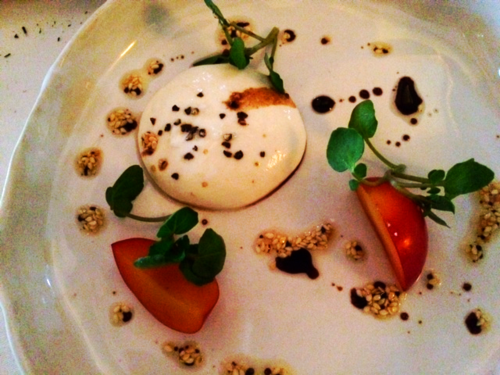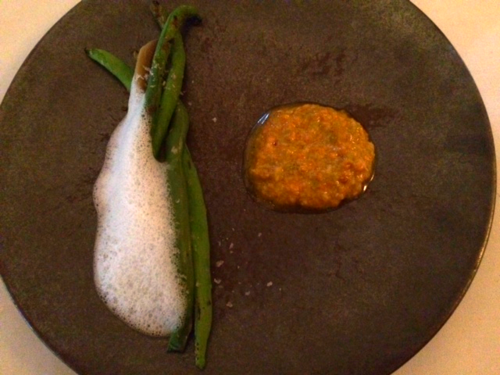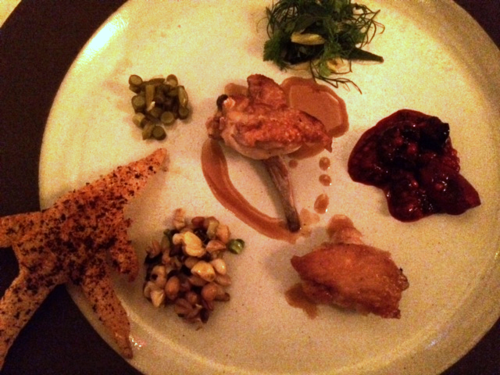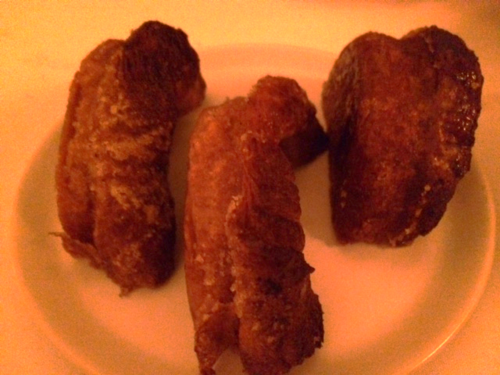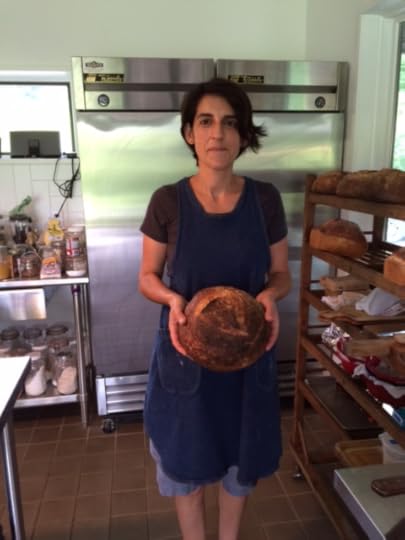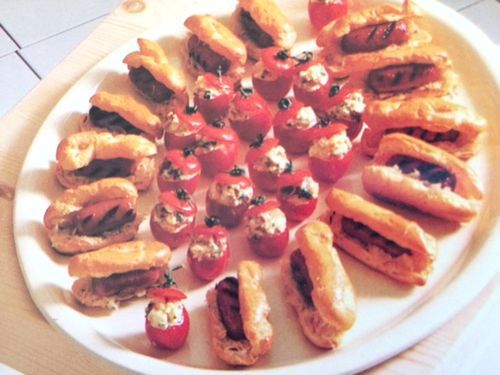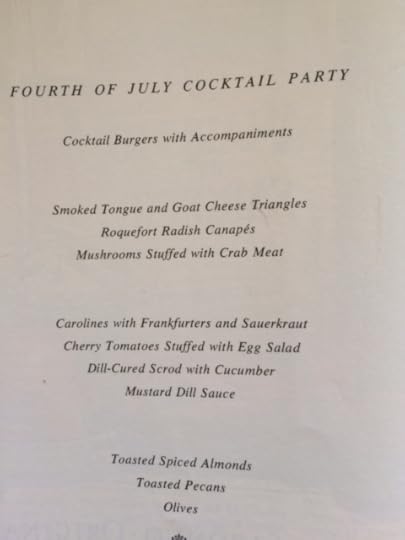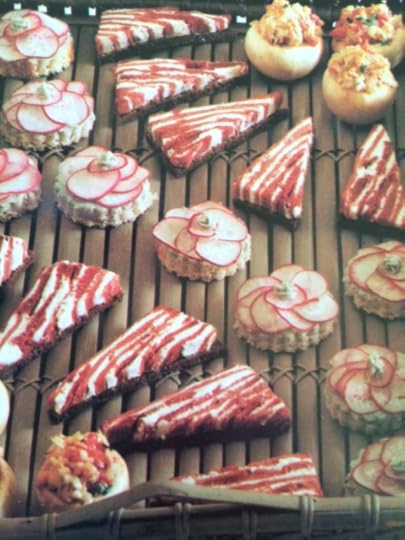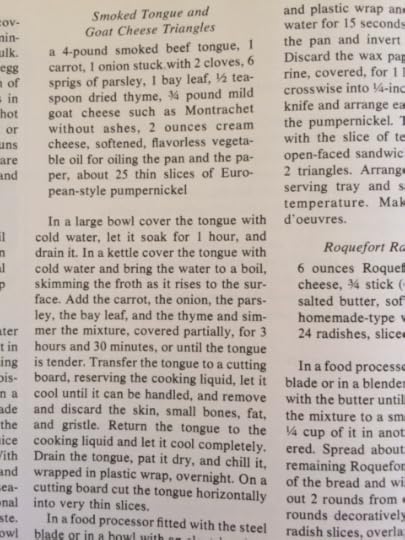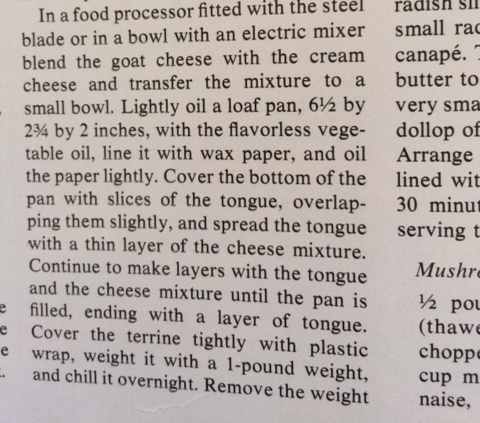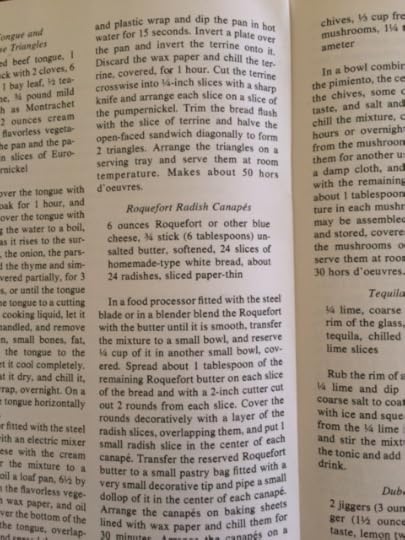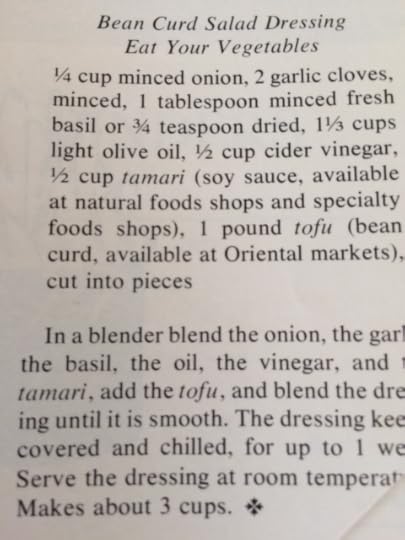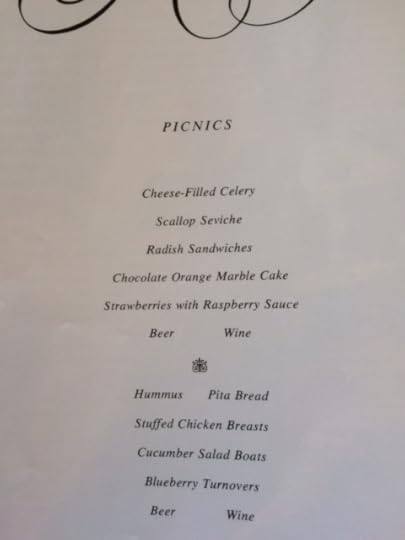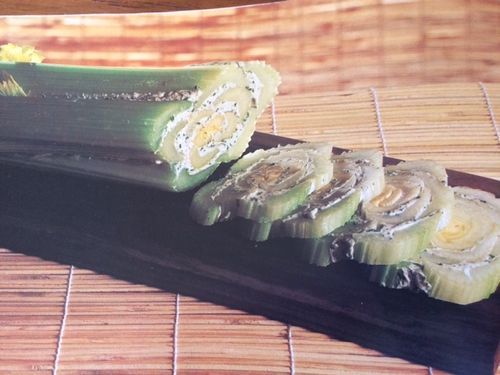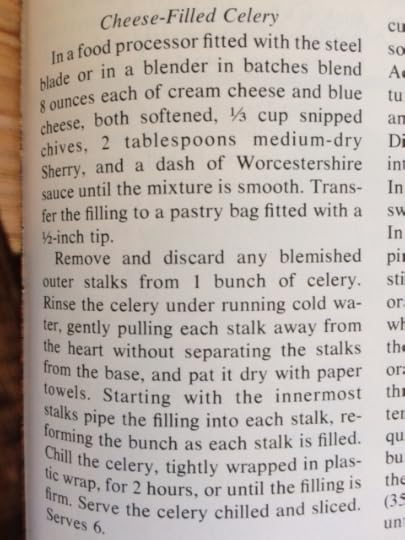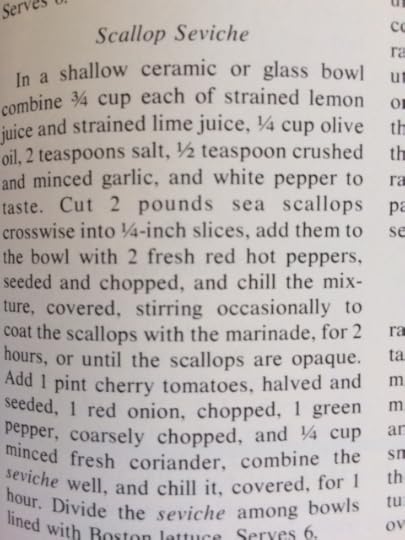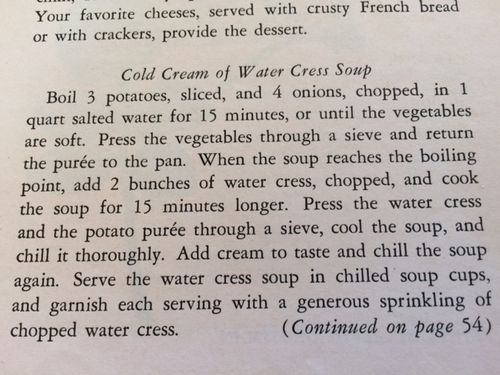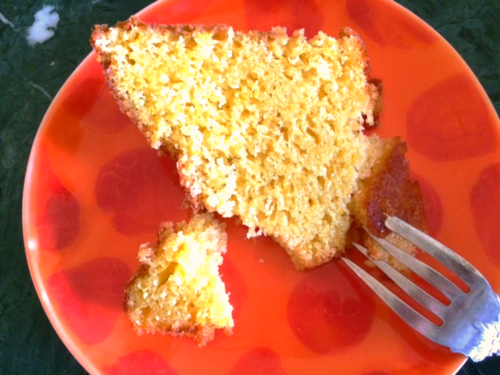Ruth Reichl's Blog, page 7
July 22, 2015
A Couple of Vintage Gems
It's August 1978, and inquiring minds want to know about roasted candied tomatoes. It is, they tell the magazine, a recipe they haven't tasted for fifty years. Can the editors help?
It's a dish I've never tasted at all - and it sounds interesting. So here you have it, a new recipe for your tomato repertoire.
If that doesn't float your boat, how about a classic recipe for a deep dish blueberry pie with a lard crust? We don't see lard crusts often enough, so here, from an article cleverly entitled "Summer Fruit Desserts" is a pie from the past.
July 21, 2015
Old Fashioned Fritos
This is the cover of Gourmet from April of 1951. It's a fascinating issue that makes you cringe as it tells you a great deal about where America was in the middle of the last century.
Samuel Chamberlin makes another stop on his tour of France: "The Epicure of Savoy enjoys his sumptuous fare against the mightiest backdrop in Europe."
Robert P. Tristram Coffin extols the joys of rural life in Maine with an essay on the quahaug.
There's an illustrated dictionary of cigar smoking.
And an absolutely appalling piece where a writer touring the south imagines a slave coming back from the dead to cook for her.
There are ads for Metaxa (can you still buy the Greek liqueur?), an article about an electric tray, "nobly dedicated to prove a boon to buffets in a dozen cozy capacities," and of course, the usual introduction of the latest Miss Rheingold, who seems uncharacteristically elegant.
And then there is this. Frito recipes in Gourmet!
July 20, 2015
"A Cheery Way with the Cherry"
Gourmet, July 1977
Not quite sure how I feel about this. This article, entitled simply "Cherries" opens with the picture above. They're sour cherries. And yet every single one of the "cheery ways with the cherry" calls for sweet cherries. Kind of a disappointment. But I've always had a soft spot for upside down cakes, so I'm going to try making the upside down cherry cake, below. Only I'm going to use sour cherries. ( I'm not planning to change the amount of sugar - it looks sweet enough.)
I'll let you know how it turns out.
The cover on this issue, in case you're interested. As you can plainly see, part of it has disappeared.
July 19, 2015
My Dinner at Stone Barns
I'm opening with these two images because, considered together, they explain so much about the remarkable restaurant that is Blue Hill at Stone Barns.
The eggplant is simply that - an entire eggplant, charred into softness and served naked. Take the time to savor the flavors and you rediscover eggplant. Eggplants are amiable creatures, so willing to take a back seat to other ingredients that they're rarely allowed a starring role. Listening to an eggplant speak with its own voice is like meeting it for the first time. The texture is creamy, the flavor clean and strong with a decided edge.
Caviar on cucumber, on the other hand, is culinary thinking in an entirely different direction. The combination reminded me, in many ways, of Joel Robuchon's famous pairing of caviar and cauliflower. The classic caviar dishes- blini, eggs, pasta - all frame the fish roe so that it stands stubbornly alone. Caviar wants to be the star, but when it encounters certain vegetables (cauliflower, cucumber), it finally deigns to relinquish its diva role and join the cast. What sets this dish apart from Robuchon's is that it is not tricked out with butter and cream; the cucumbers need no help. (That cream on top was certainly very nice, but it was definitely not necessary.)
As for those cucumbers....
We arrived at the restaurant when the sun was still high in the sky. It's good to get here early so you have time to wander the gardens and experience the fading of the light. As night falls stars dapple the sky and the Big Dipper rises until it is right above the beautiful barns that once housed Rockefeller���s pampered cattle.
Walking the fields we encountered Mike Mazourek, a plant geneticist from Cornell, who's attempting to breed a yellow cucumber resistant to the disease now threatening commercial crops. This is Mike with his Silver Slicer cucumber.
and this is Dan Barber testing the cucumber's sweetness with a brixometer (4.19). (The strawberries in the next field tested about the same.)
And here is the second course of our dinner. Mike���s cucumbers, simply sliced and so sweet I was reminded that cucumbers belong to the melon family.
Our dinner lasted almost 5 hours, and I'm not going to give you a dish by dish rundown. Here, however, are the highlights:
A little edible garden
Fermented asparagus with cattail pollen. Asparagus as you have never known it.
Baby squash with its blossom:
A squash sweet enough to eat like an apple:
Milkweed juice
Green chick peas - so remarkably sweet and soft you wonder why we only eat them dried. A revelation.
Peas stuffed with pistachios. There was something fermented in there, turning these into little surprise packages, flavor bombs that exploded when you took a bite.
Foraged greens - purslane, lambs quarters, dandelion.... with charcoal mayonnaise
Fennel salami and pickled grapes
Gazpacho julep: hiding beneath that ball of ice was the coolest, most refreshing gazpacho.
Pluots and cheese: savory fruit.
Scorched leeks
Culatello, which was served with little glasses of cantaloupe essence. A new take on prosciutto and melon. The intensity of the cantaloupe juice jolted the cured meat into an entirely unexpected sweetness.
Beans with squash blossom pesto -
Various pieces of chicken, surrounded by what a chicken eats as it hunts and pecks. Each little morsel was juicy and flavorful, but it was that foot that sent the dish into the stratosphere. (Look for the starfish on the side of the plate. ) A delicious explosion of crunch, crackle and flavor, it made me wonder about other ways with chicken feet.
There was so much more - little daikon "tacos" filled with blue fish and pork. Bread with three different butters. Baby kohlrabi. Roasted garlic. The sweetest beet I've ever met. And finally an entire parade of fruit and vegetable desserts.
The finale was this absolutely irresistible apricot kouign amann. Ending with a pastry that's all butter, sugar, artifice and crunch underscored how resolutely simple the meal had been. Mostly vegetables; many of them raw. And yet it was a thrilling circus of new flavors.
Driving home (late at night, when there's no traffic it���s only about twenty minutes to Manhattan), I asked myself what, exactly, I want from a restaurant. Because this was a meal that challenged every notion most of us have about what a fancy meal can be.
Well, not every notion. The service is stunning. Thoughtful. Attentive. Just friendly enough. The wine list is fascinating. And the room is beautiful and extremely peaceful.
But the food does not resemble that of any other restaurant. As the evening ended Dan came out with a worried look on his face. "Was it enough? Do you need a steak or something?" If we'd said yes, I'm sure a big piece of pork or lamb would have instantly appeared.
But that would have ruined everything. For almost five hours I'd been stimulated and thrilled. I often leave a long restaurant meal with the guilty sense that I've just consumed much more than my share of the world's protein. Now I floated out the door with the lightest feeling - and the sense that I'd had a small taste of the future.
July 18, 2015
A Great Little Farm Shop
This is Mimi Beaven, who runs the coolest little farm shop, Made in Ghent.
Great bread. Fantastically beautiful eggs from the chickens that are pecking just outside the door. Pork from the pigs that live in the woods behind the farm, eating nut and berries. Chicken stock. Cookies...
It's a little daunting, because the farm is so beautiful, the shop is so perfectly rustic, and everything looks and smells so good you end up buying everything.
Or at least I did. Can't wait to cook those black-foot chickens!
Incidentally, don't miss Art Omi, which is just down the road. It's a wonderful place to wander the fields, looking at sculpture.
July 16, 2015
Sweet Carolines
Before we get to those elusive carolines, the cured scrod, as promised yesterday. Here they are in all their glory on the Fourth of July buffet. And here, as promised, the recipe:
And now, those carolines....
According to Larousse, a caroline is a small eclair. Why didn't I know that? Gourmet's tiny eclairs are filled with cocktail franks and sauerkraut. Hard to think of anything sillier or more adorable....
Here, for a day when you've got nothing better to do than concoct miniature food, is the recipe.
July 15, 2015
Today's Vintage Recipe is Very Surprising
You will instantly notice a change from the past couple of covers: we've jumped to 1982, and new possibilities in printing. Say farewell to illustrated covers as we enter the age of photography.
But this pretty cover hides some serious surprises; the food inside is not nearly as docile and ladylike as the photograph would lead you to believe. I sat staring at this menu for the fourth of July, trying to imagine a modern magazine (other than Lucky Peach) brave enough to list some of these recipes:
Smoked tongue and goat cheese triangles? When was the last time you saw a recipe for tongue in a contemporary publication? As for the now-ubiquitous goat cheese, the first American goat cheese (made by Laurie Chenel in Napa), appeared a mere three years before this issue was published, so it was an extremely arcane ingredient. Who would believe that the magazine was advocating raw fish in 1982? And finally, what on earth is a "Caroline"?
Here are those intriguing little tongue tidbits:
And here's the (not exactly uncomplicated) recipe:
Tomorrow we'll look into that cured scrod recipe, and try to solve the mystery of "caroline." (Trust me, those carolines are cute.)
But for now, another surprising recipe from this issue. Who would have suspected that thirty-five years ago Gourmet was publishing tofu recipes? It came, incidentally, from an Atlanta restaurant called Eat Your Vegetables.
July 14, 2015
A Picnic Menu from Old Gourmet, 1978
I've been reading through the July issues in the box of old magazines that arrived yesterday, a bit surprised by the lack of strict seasonality. July 1971, for instance, has an insane recipe from the Troisgros brothers for a Gratin Forezien containing a pound of potatoes and more than two cups of cream. That issue also has ham with port and mushroom sauce, a cranberry soup (cranberries in July?) and a lamb and cabbage casserole. (There is also, I must admit, a long and splendid James Beard article simply entitled "Fruits.")
July 1978, however, is so extremely seasonal it was difficult to choose a single recipe. So I'm offering a few of the interesting (given the date) recipes from the centerfold picnic. Hummus. Ceviche. And this rather mad stuffed celery.
Here's that celery:
And for good measure, here's the magazine's recipe for scallop seviche. What intrigues me is the inclusion of fresh coriander - cilantro - in a 1978 recipe. It was, for the time, an extremely arcane ingredient. I'd never even seen fresh cilantro until I moved to California in 1973, and I'd bet that most people on the east coast had never even heard of it.
July 13, 2015
Great Old Magazines
A carton has just arrived on my doorstep. When I opened it I discovered that the wonderful people at Mclean & Eakin, a truly great bookstore in Petoskey, Michigan, had sent me armfuls of old Gourmet Magazines. I can hardly think of a better way to spend the morning.
I started with this issue, from July of 1958. There are some fantastic articles in here, including a memoir by Lillian Langseth-Christensen (one of our best writers on Viennese food), and a lobster primer by Louis Diat, Gourmet's resident chef (in a previous life he was the creator of Vichysoisse).
There are also a few risible moments in the issue. A reader writes to beg for a recipe for garlic soup, which he enjoyed in Madrid and the editors respond by telling him to brown 4 cloves of garlic in olive oil, add 2 quarts of hot stock and boil for 5 minutes. He is then to add 6 slices of toasted bread until it is soaked. Then - this is the good part - he is meant to remove the garlic. After that he divides the broth-soaked toast between 6 bowls and tops each with a poached egg. In the fifties Americans were very, very afraid of garlic.
More to my liking is this very lovely recipe for cold watercress soup. Perfect for this sultry summer day. (I'm planning to use small onions - we're experiencing a moment of serious onion inflation - and put it all into the food processor instead of a sieve. Times change. )
Just for fun, I'm throwing in the back cover. Miss Rheingold was a great New York fixture; when I was small the candidates' photos were posted in the subway, and we all got to vote. It was, for me, one of the highlights of riding the IRT.
July 10, 2015
Sweet and Simple: An Orange Cake
I'm a butter person; a world without butter would be a very dreary place. But Michael keeps asking me to bake cakes that use oil instead of butter, so here's another dairy-free cake.
What I like is it's sheer simplicity; this is about as basic - and easy - as they come. But one warning: don't open the oven too early. This cake will fall if provoked.
Preheat the oven to 350��. Grease and flour a bundt or tube pan.
Gently remove the zest from two oranges. Squeeze one of them - or more if you've got stingy oranges - to get a half cup of juice.
Beat 4 eggs with a cup and a half of sugar for about five minutes in a stand mixture, until it is quite thick. Slowly beat in a half cup of vegetable oil. Add the orange zest.
While that's mixing, whisk 4 teaspoons of baking powder into 2 cups of cake flour. Whisk in a half teaspoon of salt. Add the flour mixture to the wet ingredients, then carefully stir in the orange juice and a teaspoon of vanilla until smooth.
Pour the batter into the pan and bake for about 45 minutes, or until a tester comes out clean.
Ruth Reichl's Blog
- Ruth Reichl's profile
- 2980 followers







